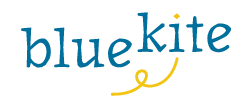My prediction for the marketing buzzword of the year?
Native advertising.
Although this trend has been bubbling to the surface for the past couple of years, I believe 2014 is when this trend really takes off.
Why?
Just last week, the New York Times ran it’s first native advertising segment on its website. Because The New York Times has taken the plunge, I expect many other publications to follow suit if they haven’t already.
If you’re unfamiliar with the term, native advertising or sponsored content is when a company pays to display their content within the context of the user’s experience. This is most common on social media sites where you see sponsored posts within the newsfeed of Facebook or Twitter.
However, the most controversial form of native advertising is on editorial and news media websites. Instead of seeing a banner ad at the top of the page, you would see the brand’s content within the editorial block of the website.

This idea isn’t entirely new. In many ways, it’s the online version of an advertorial that we’ve seen in newspapers and magazines for years.
At first blush, it seems like a win-win scenario. Publications are able to generate much-needed advertising revenue and brands are able to avoid “banner blindness” and get in front of readers in a more effective way.
However, I think the native advertising trend could be damaging for both publications and brands if they’re not careful.
Will Native Advertising Destroy Journalism?
Although one could argue that journalistic integrity is already down the toilet, I worry that native advertising could plunge distrust in the media to new depths.
There have always been concerns about the dividing line between the editorial and advertising department, but native advertising blurs the line even further. Now, you have advertising masquerading as editorial content and it begs all sorts of questions.
Does native advertising water down the true editorial content and ruin the reputation of the publication?
How does native advertising affect a brand’s ability to get editorial coverage — either positively or negatively?
Will readers assume that all coverage of a brand is paid for?
Which publications can you trust for unbiased journalism?
Native advertising on a site like Buzzfeed is one thing. But when sponsored content appears in the New York Times it begs the question if there is any place to find unbiased reporting.
The other concern is who will write the content? The New York Times pitched content ideas to Dell and then farmed out the writing to several freelancers.
But, what will other publications do? If you see bylines with the paper’s reporters, it becomes even harder to distinguish between paid and earned content.

Brands Becoming Publishers
In many ways, native advertising may continue to push the trend toward brands becoming publishers.
That’s already happening with the boon of content marketing and brand journalism. Instead of focusing on earned media through traditional channels, companies are publishing and promoting content on their own platform.
However, I can’t help but wonder if the combination of content marketing and native advertising may lead to brands increasingly taking over traditional publication channels as well.
Or, as traditional publications shrink, we may see brands and corporations fill the void with their own news sites as HSBC, Intel and others have done.
I remember reading an article awhile back that hinted that journalism may end up leaning on the backs of corporations.
I think that might be right.
Native Advertising: Implications for Brands
So what does all this mean for brands? Should you try native advertising for your company?
I think it depends on your overall content strategy and how the publications handle this type of content.
For instance, I like how Forbes has handled their native ads. Yes, the content is sponsored, but it is authored by the sponsoring company and is presented more like a guest article by a thought leader.
Some of this sponsored content has outranked the publication’s editorial content on Forbes. And, many of these sponsored articles are racking up considerable page views on the site.
This is proof that this kind of content can work for both the brand and the publication when done right. As the above article points out, the success of those articles hinges largely on the quality of the content.
What remains to be seen is whether native advertising will completely eliminate the opportunity for contributing authors to publish unpaid guest articles, which has been an earned media opportunity.
If publications realize that they could turn guest columns into paid advertorials, I wonder if those earned media opportunities will completely dry up.
Companies will need to consider how and when to use paid, sponsored content versus pursuing traditional media opportunities.
What’s next?
I think media publications must continue to find ways to innovate to generate revenue and brands need new ways to reach customers. Native advertising might just be the answer.
If you can find the right content sponsorship opportunity, it would be worth testing the waters to see how it works for your brand. For native advertising to work well, brands must deliver compelling content that’s a strategic fit for the publication.
The bottom line is this: I think native advertising is here to stay. The question remains whether it will sink journalistic integrity or save the news industry.
What do you think about native advertising? Will you try it for your brand — why or why not? Do you think native advertising will corrupt journalism?



4 replies on “Native Advertising: Brave New Marketing Channel or Destroyer of Journalism?”
Despite 20-something years in newspapers I actually support native advertising as long as it is clearly denoted as paid and the newsroom doesn’t write it. Last week, I read an interview with the NYT’s executive vice president of advertising, Meredith Kopit Levien. She was quite emphatic about the separation of the newsroom from the native advertising division.
This is advertising and it is revenue. I applaud the NYT and others for trying to develop workable formulas that will generate much needed revenue.
Thanks for weighing in, Clay! I hoped you would. 🙂
I think it has the potential to be a great thing – for both the papers and brands. However, it also has the potential for utter disaster if it’s not handled properly. If papers go out of their way to keep editorial and advertising separate, then it could work. I just worry that not every publication will be so careful. There is so much opportunity for this to go sideways. Yet, it could also be the very thing that helps save traditional papers. Time will tell.
I am a voracious reader. I seek information and I pay attention to the sources cited. I am a skeptic on most topics until I am “convinced”. If the “convincer” is open about their position as an advocate or stakeholder I may look at the information positively. However I would be wary if it appears that “yellow journalism” is the routine practice of a publication. I believe that credibility, once lost is difficult to regain.
I don’t want journalistic integrity to become like a unicorn (nice to see but not believable).
I think your point about transparency is key, Jeff. No one likes the bait and switch, so trying to conceal that the content is advertising may just have the opposite effect. If the publication and the writer are open and honest about the relationship and nature of the content, it should work okay. But, as you hinted at, I worry that some might not be quite so open. Here’s hoping!
Thanks for stopping by and sharing your thoughts!